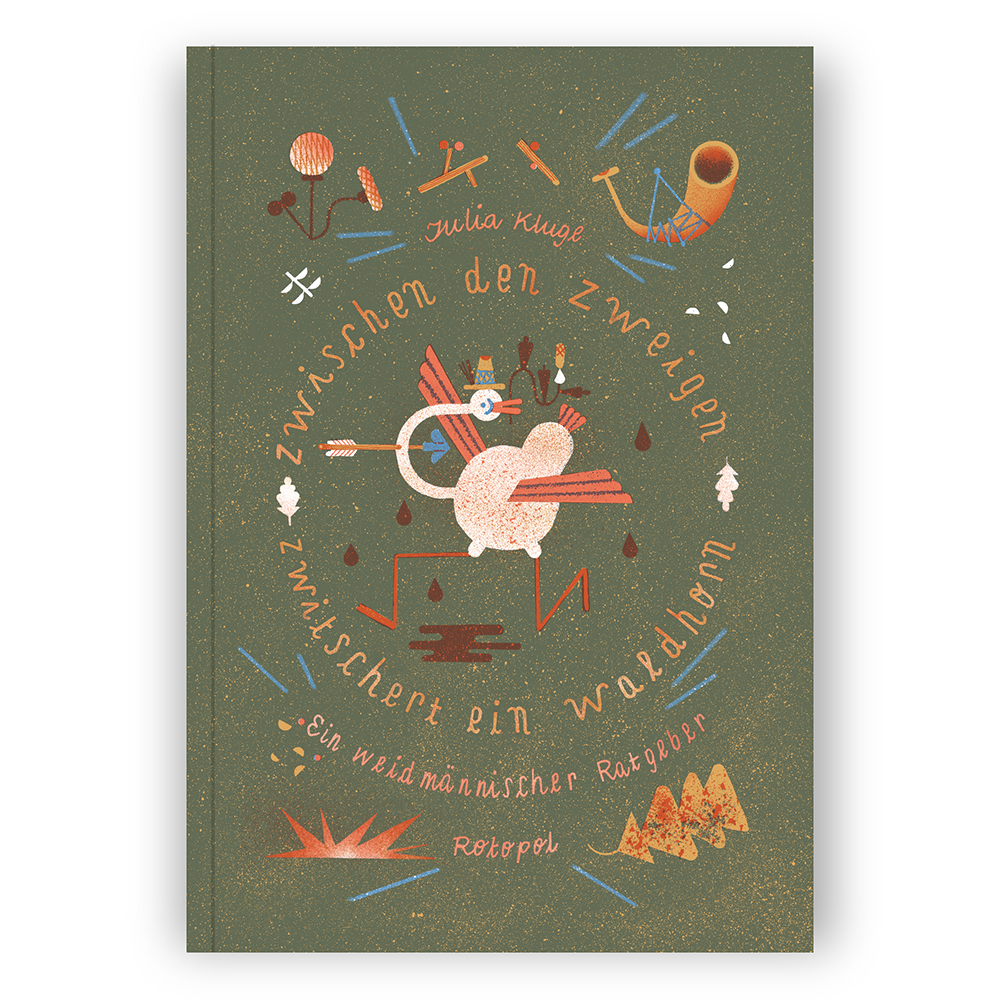Zwischen den Zweigen zwitschert ein Waldhorn
With self-forged verses and colorful illustrations Julia Kluge embarks on a hunt for centuries-old hunting customs. Through the close connection of hunting with the development of culture and art since the Palaeolithic rock paintings each epoch finds its very own portrayal of hunting, between necessary food, mystical ritual and brutal pastime.
From the Middle Ages to the 18th century hunting in Central Europe was reserved for the nobility. This power centering culminated in elaborate hunt or par force hunts, which were a popular social event at the princely courts. Anyone who wanted to be valid had to prove his sovereignty as a good hunter. Splendidly decorated hunting books, describing the tips, tricks and technique of hunting in a bizarre and beautiful manner, bear witness to the hunt-dingy epochs. Many a prince wrote his own hunting book in which he praised his abilities over the green clover.
Based on these historical hunting books, Julia Kluge drew her own “weidmännische Ratgeber.” Her illustrations open up the view of a cultural asset hidden in the undergrowth. Not only does the content fit together like a collage, but the ink drawings printed in three special colors also complement and overlap. Fine structures are reminiscent of light that falls through dense treetops on the forest floor. Crisp verses pick up the once secret language of the pastoralists. The advice can be enjoyed with a wink and reflect the ambivalent relationship between the proud self-image of the hunters and the hunted animals again.
Rotopol
Julia Kluge
44 pages
thread-stiching paperback
16 × 24 cm
German
978-3-940304-22-3







